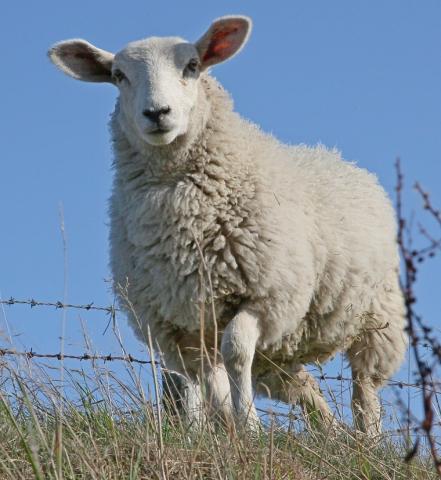With sheep tramping the ground, often producers report the ground carrying condition improves, allowing earlier application of spring fertiliser.
As well as benefits to the crop, there are advantages for the sheep in that the crops offer good nutrition when there is limited grass, and the grazing is clean with no worm burden. In addition, grazing your sheep are on cereal crops affords your grass a period of rest.
Who can do it?
This can be done on a collaborative approach, where sheep, fencing and labour is supplied by the owner of the sheep and a weekly rent is paid for the grazing, or some arable farmers prefer to do the fencing, so they have more control over the moves. This offers a fantastic opportunity to allow new entrants into the sector, meaning winter grazing is offered, and low capital costs.
What can you Graze?
Winter barley, wheat and oats can be grazed, barley will tend to be more forward than wheat and oats so should be grazed first or crops that have received organic manure. Early maturing varieties are ideal for this system, provided they are not stressed, if this is the case do not graze them. Crops which are forward should always be grazed first.
Where?
Graze the crop while it is tillering (growth stage 21-29) and not into stem extension (growth stage 30), at which point there is a risk of reducing the yield through damage to the ear. The crop must have a strong root system to avoid them being pulled out of the ground.
When to Graze
Make use of short grazing periods with high stocking densities, moving across fields quickly suits this method of grazing. Grazing the leaf to ground level is the aim as these will recover and by harvest time the grazed areas will not be identifiable. The photo shows a grazed area alongside a non-grazed area.
How to Manage Winter Grazing
The sheep can be grazed behind an electric fence on a paddock-based system. It is important to monitor the grazing, and to move the sheep onto the next break when the required level of grazing has been carried out. Some arable farmers prefer to have control over these moves, as this will vary depending on the ground conditions and the crop biomass in each field.
Top Tips for Getting Started
- Start with grazing the most forward crops.
- Have a back-up plan for poor weather e.g., a rough, grass or catch crop area to move sheep to in snow, etc.
- Set up 2-3 paddocks at a time to allow ability to move sheep quickly if required e.g., weather or lack of labour.
- Graze over a short period of time e.g., 3-14 days depending on the crop biomass to keep uniformity.
Kirsten Williams, SAC Consulting


